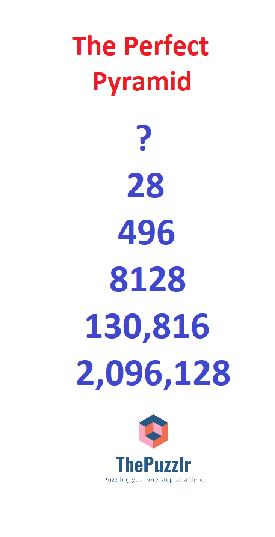Welcome to The Puzzler. Every week, there are 2 new puzzles related to my passion: math, logic, and thinking. The first puzzle will be The Puzzler Quik, meant for those who crave something fun-sized. The second puzzle will be The Puzzler Think, meant for those who love to ponder. The answers will be posted in next week’s column. Don’t forget to submit your answer for a potential shout-out in the next edition of the Puzzler.
Don’t forget to check out our new section: Mind Bogglers. It features counter-intuitive math thoughts and paradoxes.
The shout out for the Puzzler Quik from last week goes to Emmett from Ohio.
The shout out for the Puzzler Think from last week goes to Meenakshi from California.
Puzzler Quik

If 20 boys and 20 girls eat 20 oranges in 20 minutes, in how many minutes will one boy and one girl take to eat one orange?
Puzzler Think


What is the missing number that belongs on top of this pyramid and begins this progressively growing logical number sequence?
Want a hint? Contact me at aditya@thepuzzlr.com
Answers To Last Week’s Puzzlers
Click here to go to last week’s Puzzlers
Puzzler Quik
Last week’s Puzzler Quik was a easy one!
The shout-out goes to Emmett from Ohio! Good Job!
Here is the explanation provided by him(slightly edited by me):
Let x be the number of cards. We know that when x is divided by 5, the remainder is 2. This means that x must end in 2 or 7. Because n leaves a remainder of 3 when divided by 4, it must be odd and thus ends in 7 (remember that numbers that end with 2 are even). In addition, it also leaves a remainder of 2 when divided by 3. Combining the fact that we have a remainder of 2 when x is divided by 3 and 5, we know that x leaves a remainder of 2 when divided by 15. So, our possible answers are 17 and 47. Since 17 does not work, we have our answer: 47!
Puzzler Think
Kudos to Meenakshi from California for solving this problem. for solving this problem. She was the only correct submission that we received for last week’s Puzzler Think!
In chess, the knight move in an L-shape – one square up and two across, two squares down and one across,
two squares up and one across, and other like combinations. The only way that we can hit all the digits if we go from 0 to 5 or vice versa.
The graph is:

A Hamiltonian path is a path in this directed graph that visits each vertex exactly once.
Here are four Hamiltonian paths:
1.

2.

3.

4.

These are the only possible arrangements. Therefore, we have our answer: 4!
Have any questions? Want to send me a puzzle to possibly be the next puzzler? Email me at aditya@thepuzzlr.com

